The world of mobile phones is entering a new phase with thinner and lighter devices. Not only Chinese brands but also the two global mobile giants, Samsung and Apple, are joining this race. Experts advise users not to "follow the trend" but to choose devices that suit their needs and financial capabilities.
Continuously reduce thickness and weight
Over the past 10 years, the thickness of high-end smartphones has gradually decreased from 8mm, 7mm, 6mm; while popular models are still thicker.
Reducing the weight and thickness of devices is a challenge when manufacturers have to meet users' requirements: larger screens, sharp cameras, high-capacity batteries and better heat dissipation. These requirements theoretically often increase the weight and thickness of the device. To "overcome the thorns" forces manufacturers to research and optimize design, components, technology and materials.
In April 2025, OPPO launched the high-end foldable smartphone OPPO Find N5 in the Vietnamese market. This is the thinnest foldable smartphone in the world. When folded, Find N5 is 8.93 mm thin, weighs 229 g; when opened, the device is 4.21 mm thin - just slightly larger than a USB type-C port, lighter and thinner than any current smartphone. It took more than 1.5 years for OPPO to reduce the thickness and weight from Find N3 (launched in October 2023: folded 11.7 mm, opened 5.8 mm, weighed 239 g) to the thinner and lighter Find N5.
However, OPPO's record only lasted until early July 2025, when HONOR launched the Magic V5 horizontal folding smartphone, which is only 4.1 mm or 4.2 mm thin when opened; 8.8 mm or 9 mm when folded; and weighs 217 g. Exactly one week after HONOR Magic V5, Samsung launched the Galaxy Z Fold7 horizontal folding smartphone, which is 8.9 mm thin when folded; 4.2 mm when opened and weighs 215 g. A year earlier, the Galaxy Fold6 was launched with a thickness of 12.1 mm when folded; 5.6 mm when opened and a weight of 239 g, despite having a smaller screen. In the slim smartphone category, Samsung in May 2025 launched the Galaxy S25 Edge, which is only 5.8 mm thin and weighs 163 g. Meanwhile, the original Galaxy S25 standard version launched in early 2025 has a thickness of 7.2 mm.
Despite its reputation for being "conservative", Apple cannot stay out of the Android ecosystem race. In September 2025, at the same time as launching the iPhone 17 Series, Apple introduced the first iPhone Air, which surprised the mobile world with its thinness. The device is 5.6 mm thick and weighs 165 g. The iPhone Air is thinner than the Galaxy S25 Edge but the screen is only 6.5 inches, compared to Samsung's 6.7 inches.
It can be said that the goal for the "thin and light" race of the smartphone world in 2025 is to be less than 6 mm thin and weigh less than 200 g. Currently, there are new "2025 racers" such as ZTE nubia Air (5.9 mm at the thinnest point); Tecno Spark Slim (5.93 mm); Tecno Pova Slim 5G (5.95 mm thin)...
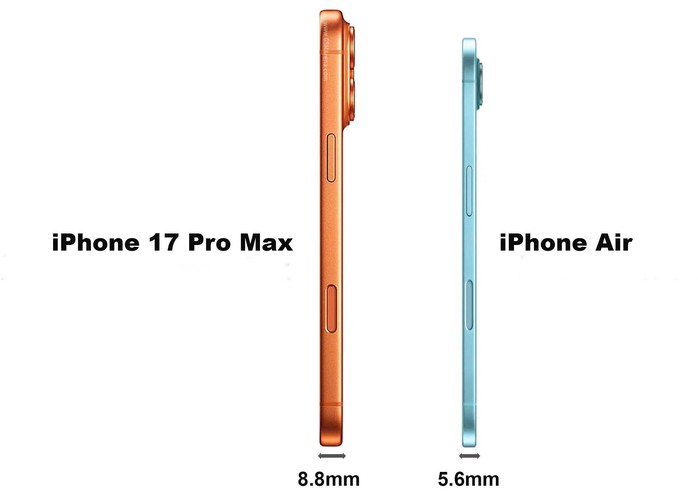
iPhone Air is super thin at only 5.6 mm. Photo: Apple
Meet the needs of fashion and convenience
To produce thin and light smartphones, manufacturers rely on materials such as magnesium alloys and titanium for light and strong cases, aluminum for the chassis and silicon for the integrated circuits. Improvements in component design, such as stacked motherboards and the use of materials such as silicon-carbon batteries, allow for compact designs by maximizing space, according to experts.
Thin and light phones are in line with luxury fashion trends, increasing aesthetics, mobility, convenience for users when holding comfortably for long periods of time, reducing pressure on hands and wrists. But the thinness and lightness of smartphones also have disadvantages, even a "price to pay" for users. First of all, their durability is reduced, they are more fragile and susceptible to damage; without the right design and materials, thin and light smartphones are prone to bending. In addition, the limited space for components, due to the thinner design, will not have much room for large batteries or other internal components, which can affect performance or features. Although some improvements allow for thinner phones without "sacrificing" features, there are often trade-offs: smaller camera modules, thinner processors, reduced heat dissipation due to lack of space. It can be said that the thin and light race is essentially the ability to resolve conflicts between users and manufacturers. Surveys show that users prefer thin and light smartphones, but still want large batteries, strong performance, advanced cameras and many useful features. This is a challenge for manufacturers to compete fiercely in investing in research and development (R&D) for increasingly thin and light smartphones.
Thin and light, optimal only in the high-end segment
According to experts' recommendations, users should choose devices with a thickness of 4 mm to under 5 mm for foldable smartphones, under 6 mm and a weight of around 150 g for bar smartphones. In reality, the thin and light smartphone race mainly only creates one more choice for a segment, mainly high-end products. Regular users should choose smartphones with a weight of 170 - 190 g, a thickness of less than 7 mm, a screen larger than 6.5 inches, a "buffalo" battery (from 6,000 - 7,000 mAh), and a sharp camera system.
Source: https://nld.com.vn/chon-smartphone-phu-hop-196250927214333714.htm





![[Photo] Discover unique experiences at the first World Cultural Festival](https://vphoto.vietnam.vn/thumb/1200x675/vietnam/resource/IMAGE/2025/10/11/1760198064937_le-hoi-van-hoa-4199-3623-jpg.webp)


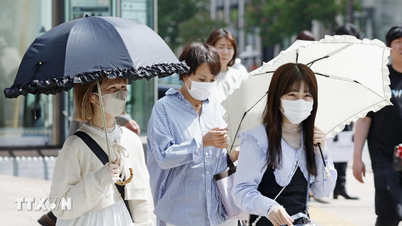

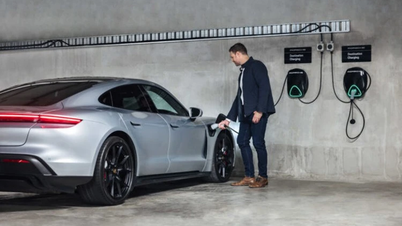




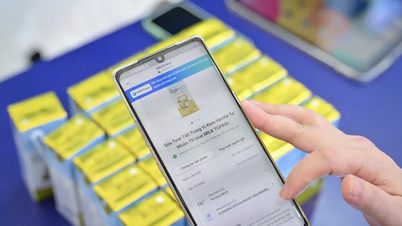

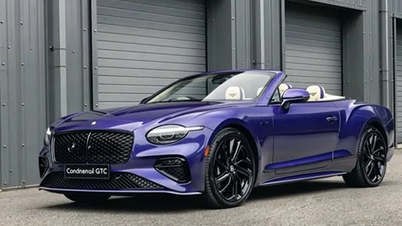






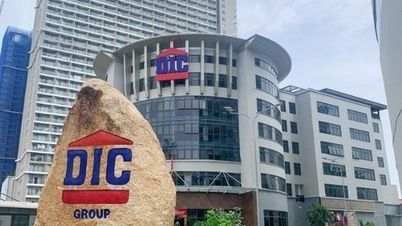



![[Photo] General Secretary attends the parade to celebrate the 80th anniversary of the founding of the Korean Workers' Party](https://vphoto.vietnam.vn/thumb/1200x675/vietnam/resource/IMAGE/2025/10/11/1760150039564_vna-potal-tong-bi-thu-du-le-duyet-binh-ky-niem-80-nam-thanh-lap-dang-lao-dong-trieu-tien-8331994-jpg.webp)












































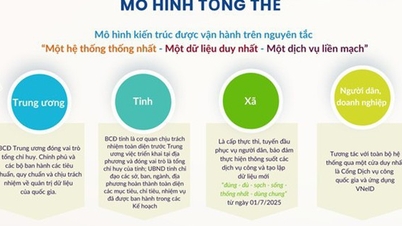























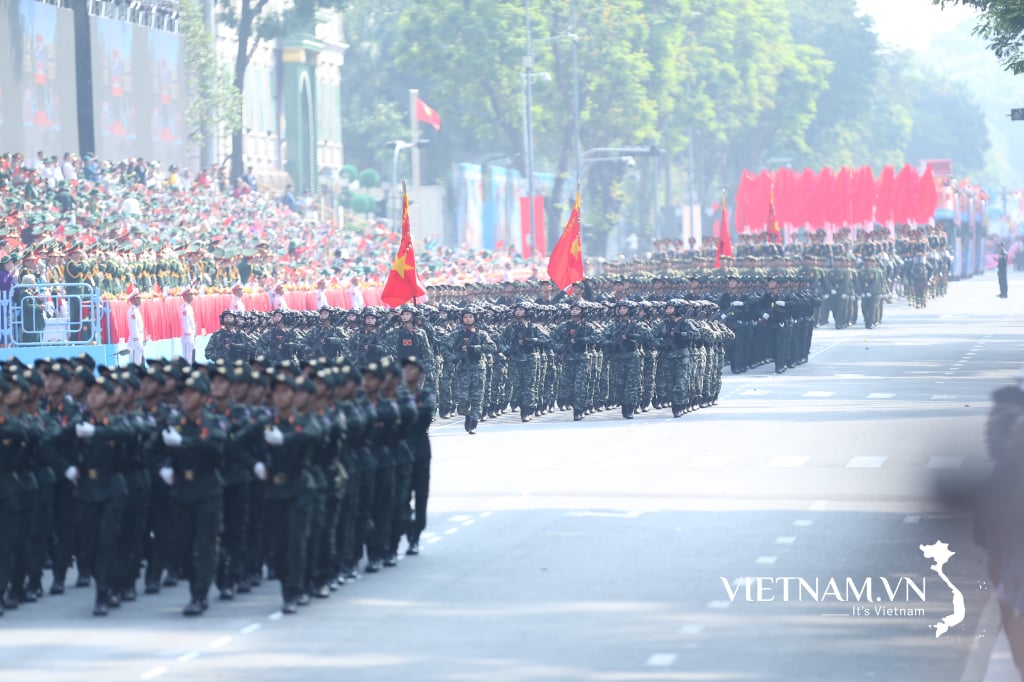
Comment (0)